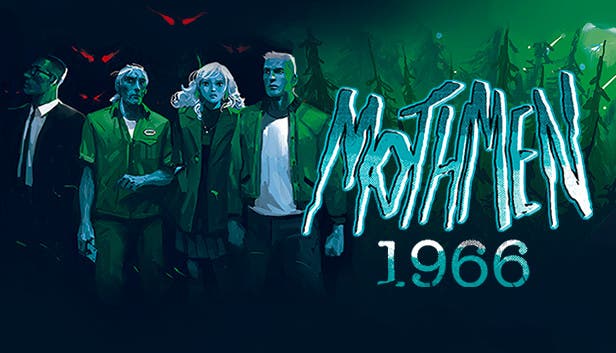What we've been playing
A few of the games that have us hooked at the moment.
20th January 2023
Hello! Welcome back to our regular feature where we write a little bit about some of the games we've found ourselves playing over the last few days. This time: Cyberpunks, Mothmen, and other horrors.
If you fancy catching up on some of the older editions of What We've Been Playing, here's our archive.
Cyberpunk 2077, PS5
I've got this accidentally intriguing thing going on at the moment whereby my partner is playing The Witcher 3 on PS5, while I'm also playing Cyberpunk 2077 on the same machine - we take it in turns. And because it's a one-bed flat, you can't help but watch the other person when they play. It means we have a kind of before and after, 'flicking between CD Projekt's Recent work' situation, and it's fascinating the things that bubble up from it.
For instance, I think you can really get a sense of the things CD Projekt Red values in games like this. Things like large crowds, and energy, and detail. And humour. There's rarely a bare corner in either game, and that's impressive given the size of them.
It also surprised me how much more advanced Cyberpunk 2077 feels, in terms of how it looks and how it plays. And that's not to throw shade at The Witcher 3, because that game still stands up beautifully in 2023. It's more to praise the work CDPR went on to do with Cyberpunk 2077.
One feature that really stands out is the ability to walk freely in and out of conversations. Cyberpunk 2077 doesn't lock you into them like The Witcher 3 does. The characters' heads just follow you around when you're near. And it frees up Cyberpunk 2077 enormously, allowing it to move conversations around and to walk and talk - to West Wing - with you. And the result is more variety, more energy, and more visual opportunity because of it.
The other thing that comes through, and I don't know if it's a good thing - I think it is a good thing - is a kind of baked-in sense of hubris. There's an intended excessiveness to Cyberpunk 2077 everywhere you look, in its salaciousness and gore and general fuck you tone. And I get it: that's what Night City is about.
But it also seemed to be what CDPR was about at the time, albeit to not quite the same degree. There was a swagger and garishness emanating from it, a bit of game and maker mirroring each other. And there were obvious downsides to this, as we well know, but the more of Cyberpunk 2077 I play, the more I think I wouldn't have liked it any other way. The game had to be like this, and could only have come from CDPR at that specific time. It makes me wonder, actually, how different the Cyberpunk sequel will feel.
Bertie
Mothmen 1966, Switch
I've been itching to get back to Mothmen 1966, partly to see if it's as special and evocative as I remember it being, and partly because I just want to spend more time in this world - and is there a better reason to want to play a videogame?
Actually, it's two worlds I've been spending my time in here, both of them intermingled. This is the special superpositioning of videogames, I think: there's the world on the screen, with its haunted woods and lonely gas stations. And then there's the world evoked by the game and memories of playing games like it - the early days of PC gaming, which puts me back in secondary school and in the house of a friend who used to get all the newest, weirdest games.
To travel between both these worlds is a real delight. I play Mothmen at night: dark outside and the street quiet. And I lose myself in games and monsters and memories. Pretty much perfect.
Chris Donlan
The Excavation of Hob's Barrow, PC
It's not that long since I first played Hob's Barrow, but I'm back already. Not just to enjoy the wonderfully soggy pixel art and that ingenious trick ending, which I swear gets more horribly memorable the more time you put into thinking about it.
I'm back now, I reckon, because I've been reading Wild, by Amy Jeffs, the follow-up to Storyland and another book that explores the ancient British imagination, with all its rain and stone and lingering horrors.
The first story in Wild features a barrow of sorts and a woman who's been condemned to - well, that would be saying. It's fascinating, though, to see a certain kind of sinister Britishness - one rooted in the soil and the landscape - explored both in a book and a videogame. Perfect bedfellows really.
Chris Donlan




